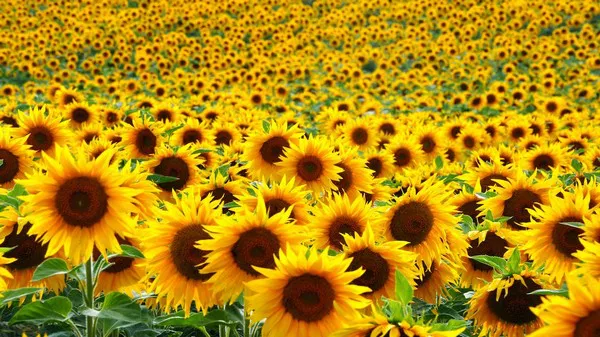Flowers have long captivated human imagination with their beauty and diversity. They come in all shapes, sizes, and colors, and their blooming patterns are equally diverse. Some flowers open their petals to greet the sun, while others prefer the moonlight. In this article, we will delve into the enchanting world of flowers that bloom during the day and close at night. We’ll also explore the science behind this phenomenon, the ecological significance, and the cultural symbolism associated with these remarkable blooms.
1. Day-Blooming Flowers: An Introduction
Day-blooming flowers, also known as diurnal flowers, are those that open their petals during the daylight hours, typically in response to sunlight. This behavior is governed by various environmental cues and biological mechanisms. Some of the most iconic day-blooming flowers include sunflowers (Helianthus annuus), daisies (Bellis perennis), and morning glories (Ipomoea spp.).
The Science Behind Day-Blooming Flowers
The opening and closing of flowers are primarily regulated by a combination of environmental factors and the flower’s internal biological clock. Here’s a brief overview of the key mechanisms involved:
Phototropism: Phototropism is the ability of plants to respond to light. During the day, sunlight triggers a hormone called auxin, which causes the cells on the side of the stem facing the light source to elongate. This results in the flower’s petals opening up to capture the maximum amount of sunlight for photosynthesis.
Circadian Rhythms: Flowers, like many other organisms, have internal biological clocks known as circadian rhythms. These rhythms influence the timing of various physiological processes, including flower opening and closing. For day-blooming flowers, their circadian rhythms are synchronized with the day-night cycle.
Temperature and Humidity: Temperature and humidity also play a role in flower opening. Many day-blooming flowers prefer warmer temperatures and lower humidity levels for optimal blooming.
2. Night-Closing Flowers: An Enigmatic Phenomenon
In contrast to day-blooming flowers, night-closing flowers, or nocturnal flowers, exhibit the opposite behavior. They remain closed during the day and open their petals at night. Some well-known examples of night-closing flowers include moonflowers (Ipomoea alba), evening primroses (Oenothera biennis), and night-blooming cereus (Selenicereus spp.).
The Science Behind Night-Closing Flowers
The opening of night-closing flowers at night is a fascinating phenomenon driven by specific biological and environmental factors:
Photoperiodism: Night-closing flowers are often governed by a phenomenon known as photoperiodism. They use the length of daylight and darkness to determine when to open and close. As the day lengthens and sunlight diminishes, these flowers detect the decreasing light levels and prepare to open their petals as dusk approaches.
Pollinator Attraction: Many night-closing flowers are adapted to attract nocturnal pollinators, such as moths and bats. These flowers often have pale or white petals that stand out in the dark and emit a strong fragrance to guide pollinators to their nectar.
Reduced Transpiration: Closing during the day helps night-closing flowers reduce water loss through transpiration, as daytime heat and sunlight can lead to excessive water loss. By opening at night, they can conserve water and remain hydrated.
3. The Ecological Significance of Day-Blooming and Night-Closing Flowers
The blooming patterns of flowers have significant ecological implications. Day-blooming flowers often rely on diurnal pollinators like bees, butterflies, and birds, which are active during daylight hours. These flowers have evolved specific adaptations, such as vibrant colors and sweet nectar, to attract these pollinators. The mutualistic relationship between day-blooming flowers and their daytime pollinators is vital for both plant reproduction and pollinator survival.
On the other hand, night-closing flowers have evolved to attract nocturnal pollinators, which are typically overlooked when discussing pollinator ecology. Moths and bats are essential contributors to pollination, especially in environments where daytime pollinators are scarce. Night-closing flowers’ unique features, including their pale colors and strong fragrances, cater specifically to these creatures.
Both day-blooming and night-closing flowers contribute to the overall biodiversity and health of ecosystems by supporting diverse pollinator communities.
4. Cultural Symbolism and Significance
Flowers have held symbolic meanings in human cultures for centuries, often associated with emotions, events, and seasons. The blooming patterns of flowers have also been imbued with symbolism:
Day-Blooming Flowers: These flowers are often associated with themes of happiness, positivity, and new beginnings. For example, sunflowers are a symbol of warmth and optimism, while daisies are linked to innocence and purity.
Night-Closing Flowers: Night-closing flowers, particularly those that open only under the light of the moon, have an air of mystery and enchantment. They are often seen as symbols of secrecy, transformation, and the hidden beauty that can only be revealed in the dark.
In various cultures, these flowers have been used in rituals, ceremonies, and art to convey emotions and convey deeper meanings.
Conclusion
The world of day-blooming and night-closing flowers is a testament to the incredible diversity and adaptability of plant life. From the science behind their opening and closing mechanisms to their ecological significance and cultural symbolism, these blooms continue to captivate our imagination and remind us of the intricate connections between plants, pollinators, and human culture. Whether you prefer the cheerful faces of sunflowers in the daytime or the mysterious allure of night-blooming cereus under the moonlight, these flowers offer a glimpse into the wonders of the natural world.


